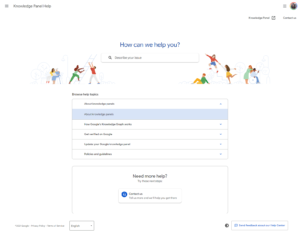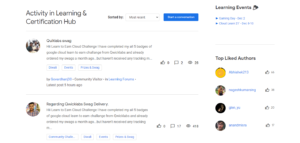Self-Service Customer Support – Helping Customers Help Themselves
In today’s world, providing outstanding customer service has become an increasingly complicated concept. Customers have several channels through which to interact with businesses, but this may be overwhelming and even detrimental to the company if omnichannel strategies are not optimized for a pleasant experience.
Some consumers may prefer to talk with a live person for the security of knowing that their problem will definitely be resolved. Unfortunately, this process is frequently time-consuming. Most customers want to save time while still feeling empowered in the process, and they want to receive great, individualized service with alternative communication options available. So, how can companies provide all of these attributes at the same time? Self-service may hold the key.
With 40% of customers choosing self-service over calling a customer service representative, the growth of self-service customer support appears to be accelerating at a breakneck speed, with no indications of stopping.
What is Self-Service Customer Support
Self-service, also known as automated service or automation, continues to shine as a winning customer service approach, with businesses across multiple sectors discovering a variety of methods to provide faster, more efficient service for better customer satisfaction and loyalty.
Self-service portals, knowledge bases, and online preferences, and account tools have seen a considerable number of jobs transition from company-driven to customer-driven as modern organizations strive to serve large client bases with relatively few personnel.
According to Zendesk, 69% of customers try to address their problems independently, indicating that customers place a high value on time and convenience.
Furthermore, self-service decreases cost for contact centers, allowing them to focus their resources on more vital activities while also enhancing live agent productivity.
How to Provide Self-Service Customer Support
Companies who want to start offering self-service to their clients have a variety of choices.
Four of the most effective customer self-service tactics, as well as a few examples of firms that have had significant success with them, are included below.
1. Create a Knowledge Base
A knowledge base is a tool that makes it simple to set up a customer support center. You may post how-to articles and answers to commonly asked questions, arrange them into a logical taxonomy, and make your information searchable using your help center’s search function as well as search engines.
Wistia is a fantastic example of how a knowledge base may be used to provide successful self-service. In order to better expand as they attracted many additional clients, they deleted their phone number from their website in 2012.
Wistia, on the other hand, did not simply eliminate phone assistance; they replaced it by substantially investing in their knowledge base, creating a plethora of educational and amusing materials to help their customers learn and solve difficulties.
The self-service technique proved to be a huge success. Customers gave them “very happy feedback” when they reduced phone help by 25%, witnessed a rise in conversion speed, were freed up to give more in-depth support when needed, and received “excellent favorable feedback.”

2. Provide Automated Support
With self-service technologies, there are a few different methods to give automated help.
Using a chatbot is one possibility. Chatbots are typically seen in a live chat application and may be programmed to respond to commonly requested inquiries. Customers might be frustrated by badly trained chatbots, therefore it’s critical that the chatbot you choose makes it simple for them to contact a human representative.
Use a tool like Help Scout’s Beacon as another alternative. Beacon is a live chat solution that reveals relevant articles from your help center, allowing consumers to get answers without having to talk to a live person. Customers may quickly contact your support staff if they can’t locate the answers they need.
3. Make Pre-Recorded Classes and Tutorials Available
Pre-recorded lectures and videos may be a terrific resource for helping clients get up to speed if your product is complex — or if you receive a lot of queries from new customers about how to use it.
Creating pre-recorded lectures and tutorials may be as simple as recording one of your live sessions if you currently provide live lessons to consumers. When you’re done, you may use those films to a variety of uses:
- Make the recordings available on your website and in your support center.
- Show them off in the app to aid with new user onboarding.
- In new client onboarding emails, include links to them.
- Crop your videos to create mini-tutorials for different actions and functions, and then use them in-app onboarding or in appropriate knowledge base articles.
4. Create a Community or a Public Forum
While it’s usually great to have professionals on your staff assisting and generating support information for your customers, there are some situations where a forum or community where consumers can help one other makes sense:
- If your business is fast expanding and you’re either having trouble keeping up with your support queue or don’t have the time to produce knowledge base articles for all of your frequently asked issues.
- If you provide a free product or service but are unable to assist all of your consumers.
Google is an excellent example of why having a community is beneficial. There are over 250 goods available, many of which are free. And each of its most popular free products has over a billion active users.
The firm has created communities for several of its products to assist consumers to acquire the answers they need to thrive. Customers may ask for help in the communities from other users as well as Product Experts, who are frequent participants in the communities and give good answers and support.

Forums and communities, on the other hand, have the same requirements as chatbots: they perform best when they’re backed up by your support team. Customers can often answer other people’s queries, but if they can’t, you should have a community moderator from your support staff who can step in and help.
What are the Benefits of Customer Self-Service?
Self-service customer support has a number of advantages for customers, businesses, and support employees alike:
-
Improved customer experience:
According to research, individuals prefer to answer their own concerns before contacting support: “Across sectors, nearly 81% of all customers seek to resolve things themselves before contacting a live person.”
-
Increased sales:
Many clients would quit a purchase rather than deal with the uncertainty of a customer care request’s time and outcome: “If they can’t get a timely solution to their inquiry, 53% of online adults in the United States are likely to quit their online transaction.”
-
Lower support costs:
According to HBR, self-service allows businesses to help a large number of customers at a low cost: “The cost of a do-it-yourself transaction is measured in pennies, whereas the average cost of a live service interaction for a B2C company is more than $7, and more than $13 for a B2B company.”
-
Greater support availability:
While human-powered help may be limited to particular days of the week or hours of the day, self-service technologies offer support to your clients 24 hours a day, 7 days a week. Support agents are happier and more productive, according to studies, because 40% of client issues are “mind-numbing and repetitious.” Self-service minimizes the number of repetitious queries in your queue, making assistance more interesting and allowing agents to focus on more difficult client scenarios.
It’s not simply a disservice to your consumers if you don’t invest in self-service. It’s a disadvantage in the marketplace.
That’s a step up from simply shooting yourself in the foot: you’re handing a shotgun to your leaner, meaner opponents so they can do it for you. Providing self-service does not imply that you are no longer providing service. You’re really improving the whole experience by demonstrating that you trust your consumers enough to let them help themselves.
See our professional BPO services here, including:
- Sales Support
- Customer Support
- Recruitment Process Outsourcing
- Accounting & Bookkeeping
- Data Processing
- Insurance Processing
- Underwriting
- eCommerce
See our BPO case studies to see how we’ve helped businesses to grow.
